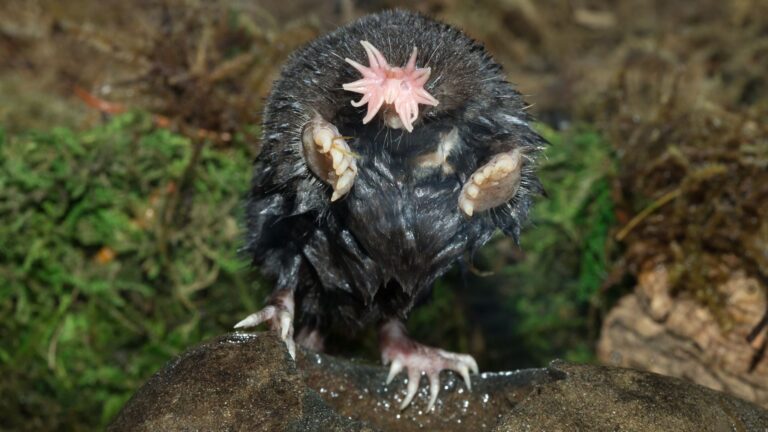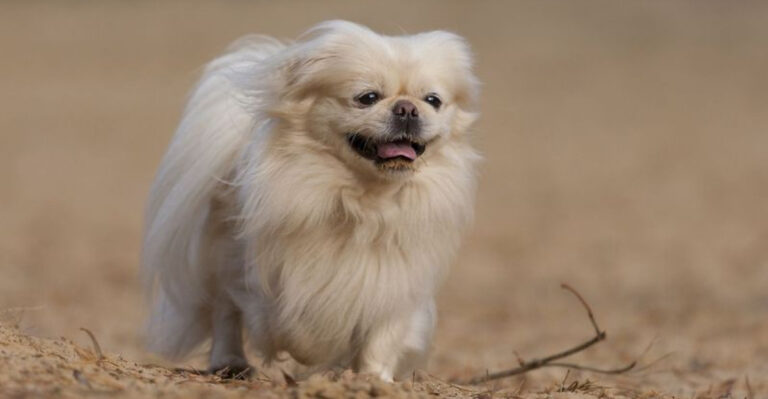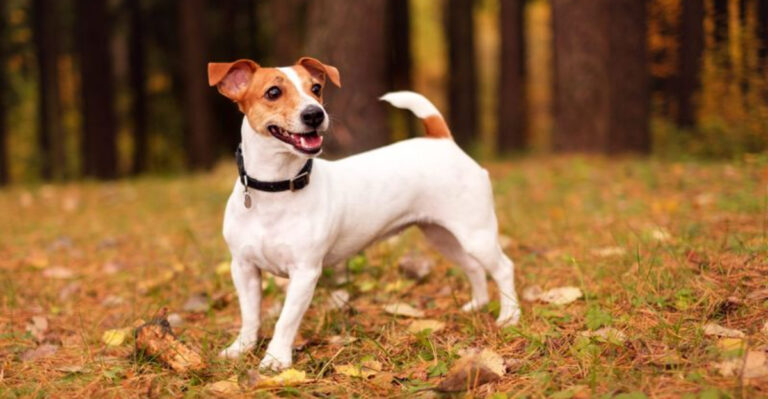15 Fastest Flying Animals In The World Ranked

The animal kingdom is full of incredible aerial athletes that can zoom through the skies at mind-boggling speeds.
From tiny insects to powerful birds of prey, these speed demons have evolved remarkable adaptations that allow them to slice through the air faster than most cars on the highway.
Ready to meet Mother Nature’s fastest flyers? Buckle up as we count down the speediest creatures of the sky!
1. Peregrine Falcon: The Undisputed Speed Champion
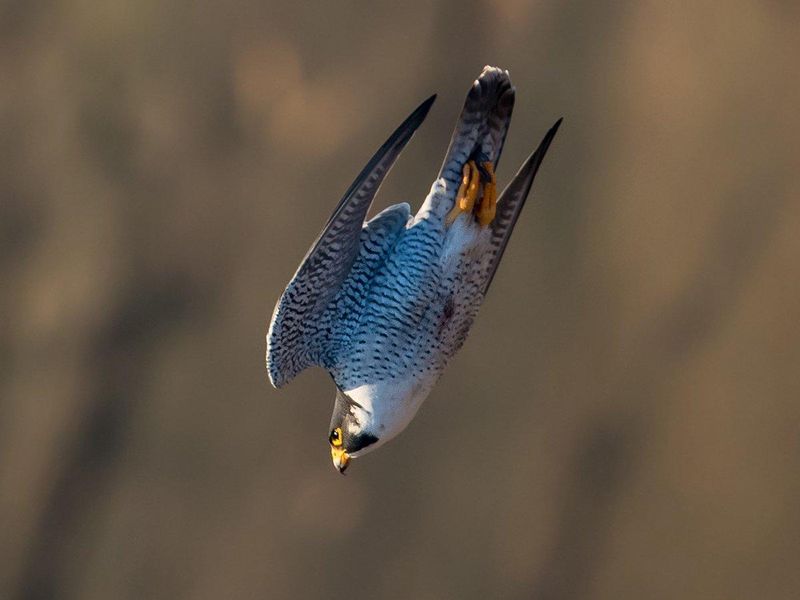
Like a feathered bullet from the sky, this raptor can reach an astonishing 240 mph during its hunting dive, making it not just the fastest bird but the fastest animal on Earth.
Its special adaptations include cone-shaped nostrils that prevent lung damage at these extreme velocities. When targeting prey, the falcon transforms into a perfectly streamlined missile.
2. Golden Eagle: The Powerful Pursuer
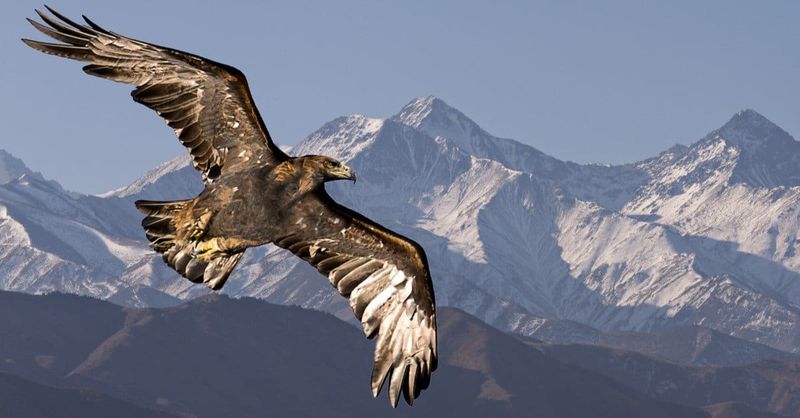
Soaring through mountain ranges at speeds up to 200 mph, these majestic hunters combine raw power with remarkable precision. Their massive wingspan creates the perfect balance of strength and agility.
Golden eagles possess extraordinary vision, spotting prey from nearly two miles away. Their hunting strategy relies on surprise attacks from great heights, using gravity to reach their incredible top speeds.
3. Common Swift: The Non-Stop Flyer
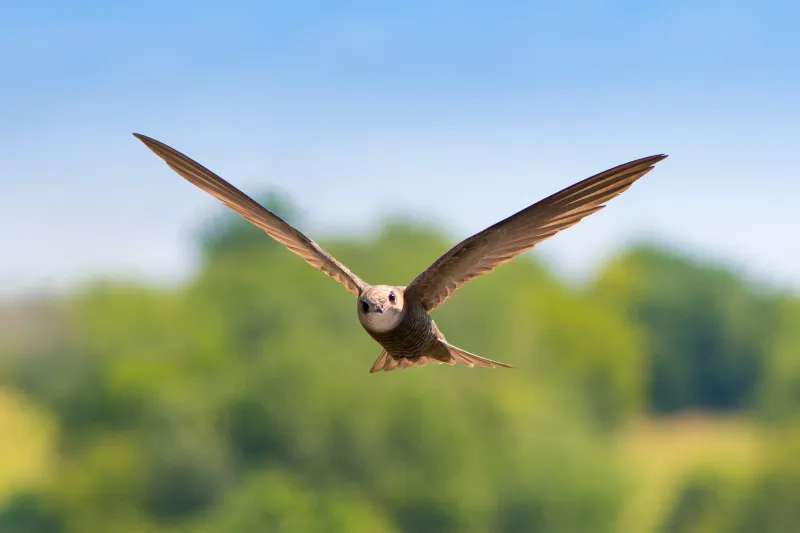
Ever wonder what it’s like to live in the air? These remarkable birds spend up to 10 months without landing, reaching speeds of 105 mph. Their crescent-shaped wings enable this extraordinary lifestyle.
Swifts even sleep while flying, shutting down half their brain at a time. Their specially designed bodies make them perfectly adapted for their aerial existence, eating, drinking, and even collecting nesting material without touching ground.
4. White-Throated Needletail: The Horizontal Speed King
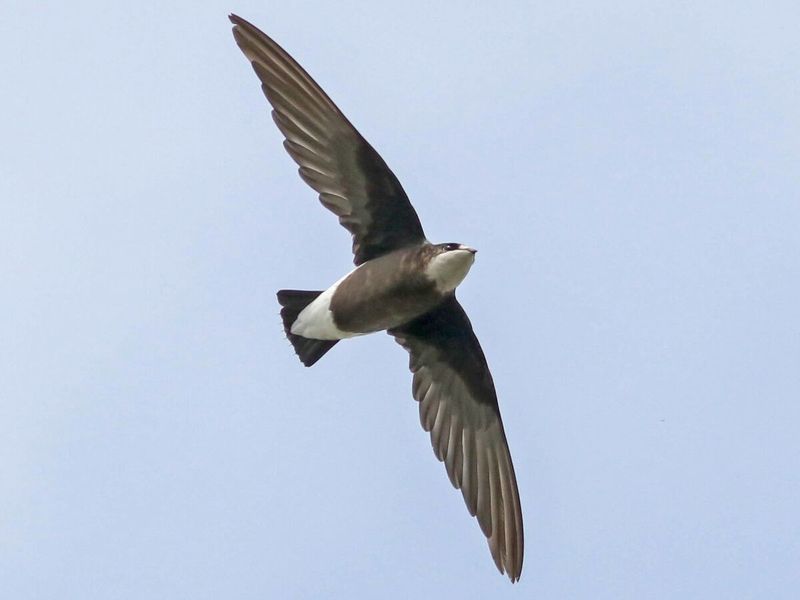
Thundering through the skies at 105 mph in level flight, this Asian swift doesn’t need gravity’s help to break speed records. Its needle-like tail and compact body slice through air resistance like a knife.
Unlike diving specialists, the needletail achieves its impressive velocity through pure muscle power. Sadly, these aerial masters face population decline due to habitat loss, making their lightning-fast displays increasingly rare to witness.
5. Eurasian Hobby: The Dragonfly Hunter
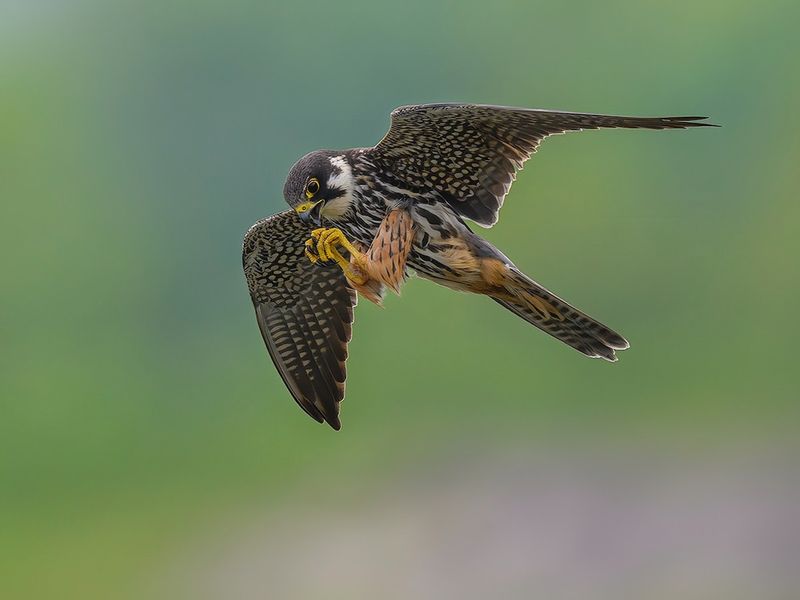
Zipping through the air at 100 mph, this falcon species specializes in catching dragonflies and swallows mid-flight. Talk about fast food! Its slender wings and lightweight body make it incredibly maneuverable.
Unlike its larger falcon cousins, the hobby hunts mostly on the wing rather than diving. Their aerial acrobatics include spectacular food transfers, where males pass prey to females in mid-air during courtship displays.
6. Frigatebird: The Aerial Pirate
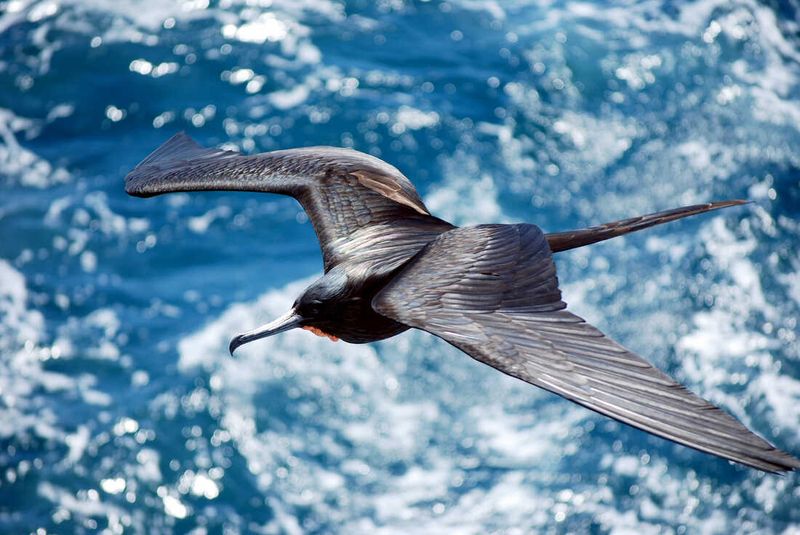
With a wingspan reaching 7.5 feet but weighing just 3 pounds, these oceanic bandits can cruise at 95 mph for days without landing. Their nickname “man-of-war birds” comes from their pirate-like habit of harassing other seabirds.
Unable to land on water despite living at sea, frigatebirds have the highest flight-to-body-weight ratio of any bird. They can sleep while riding warm air currents and have been recorded staying aloft for up to two months.
7. Red-Breasted Merganser: The Speedy Duck

Forget what you think about ducks being slow! This torpedo-shaped waterfowl can reach 80 mph, making it the fastest duck in the world. Its aerodynamic body and narrow wings are built for speed, not waddling.
Unlike most ducks, mergansers are specialized fish-eaters with serrated bills perfect for gripping slippery prey. They need their remarkable speed to escape predators and navigate between feeding and nesting grounds during migration.
8. Spur-winged Goose: The Heavyweight Speedster
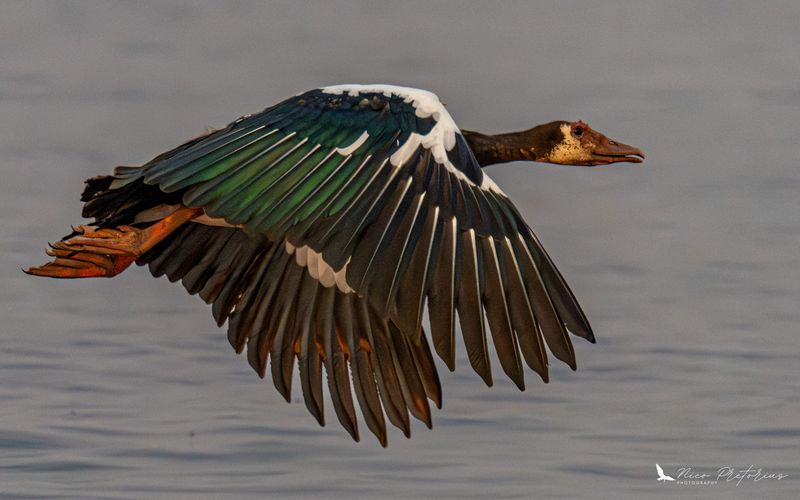
Armed with sharp wing spurs used in combat, these African geese can surprisingly hit speeds of 80 mph despite weighing up to 15 pounds. Their powerful flight muscles generate tremendous thrust to propel their bulky frames.
Don’t let their size fool you – these birds are living missiles. The dangerous spurs on their wings serve as weapons against predators and rivals. They’re among the largest waterfowl capable of sustained flight at such impressive speeds.
9. Gyrfalcon: The Arctic Speedster

Ruling the frozen north, these powerful hunters reach 80 mph in pursuit of ptarmigan and waterfowl. Their extra-dense plumage provides insulation against Arctic temperatures without sacrificing aerodynamics.
As the largest falcon species, gyrfalcons combine size with speed in a lethal package. Their coloration varies from nearly pure white to dark gray depending on their range, providing perfect camouflage for these high-speed arctic predators.
10. Rock Dove: The Surprisingly Swift Pigeon

Those common city pigeons? Their wild ancestors can hit 77 mph during sustained flight. No wonder they’ve been used as messengers throughout history! Their incredible navigation skills complement this unexpected speed.
Rock doves possess specialized lung systems that extract twice as much oxygen from each breath as mammals. This biological advantage allows them to power their flight muscles efficiently during long-distance journeys, making them both fast and enduring flyers.
11. Canvasback Duck: The Bullet Of The Wetlands

Rocketing across marshes at 75 mph, these distinctive ducks with sloping profiles create a whistling sound as they cut through the air. Their narrow wings and streamlined bodies minimize drag during flight.
Canvasbacks are diving ducks that feed on underwater plants, requiring powerful flight muscles to take off from water. Their speed helps them cover vast distances during migration, traveling between Canadian breeding grounds and southern wintering areas.
12. Anna’s Hummingbird: The Tiny Speed Demon
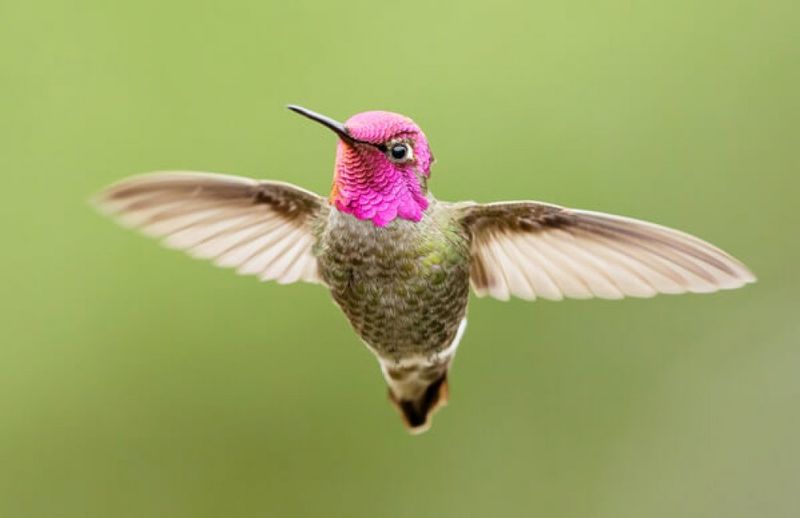
Small but mighty, these iridescent jewels can dive at 60 mph relative to their body size – equivalent to a human traveling at 27,000 mph! During courtship displays, males create a distinctive popping sound with their tail feathers.
When adjusted for body length, their diving speed makes them the fastest vertebrate on Earth. These tiny speedsters beat their wings up to 80 times per second during normal flight and can fly backwards, upside down, and hover with precision.
13. Mexican Free-Tailed Bat: The Nocturnal Racer
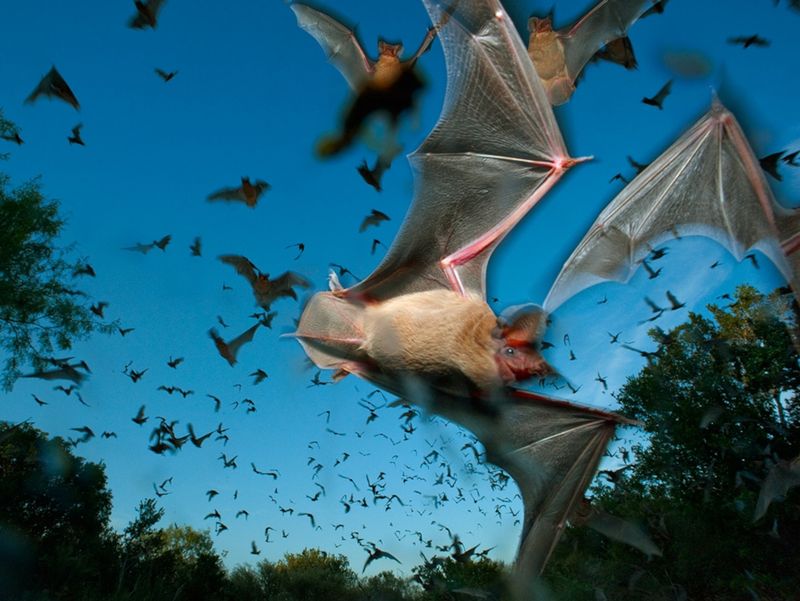
Under cover of darkness, these small mammals reach astonishing speeds of 60 mph, faster than any other bat species. Their aerodynamic wings, resembling those of fighter jets, allow them to outpace most night-flying birds.
Forming colonies of millions, these bats create spectacular emergences from caves each evening. They can travel over 60 miles in search of insects each night and fly higher than any other bat – up to 10,000 feet above ground.
14. Spine-Tailed Swift: The Aerial Athlete
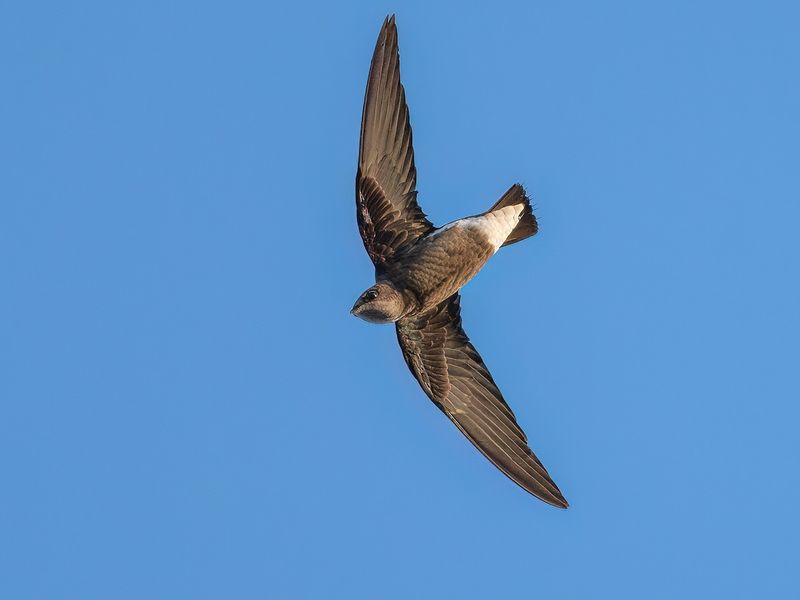
Racing through Asian skies at 60 mph, these birds spend nearly their entire lives airborne. Their name comes from the spiny projections on their tail feathers that provide stability during high-speed flight.
With extremely short legs, these swifts can’t perch like other birds – they can only cling to vertical surfaces. They even mate while flying and collect nesting materials by snatching them mid-air, truly embodying life on the wing.
15. Dragonfly: The Insect Speed King
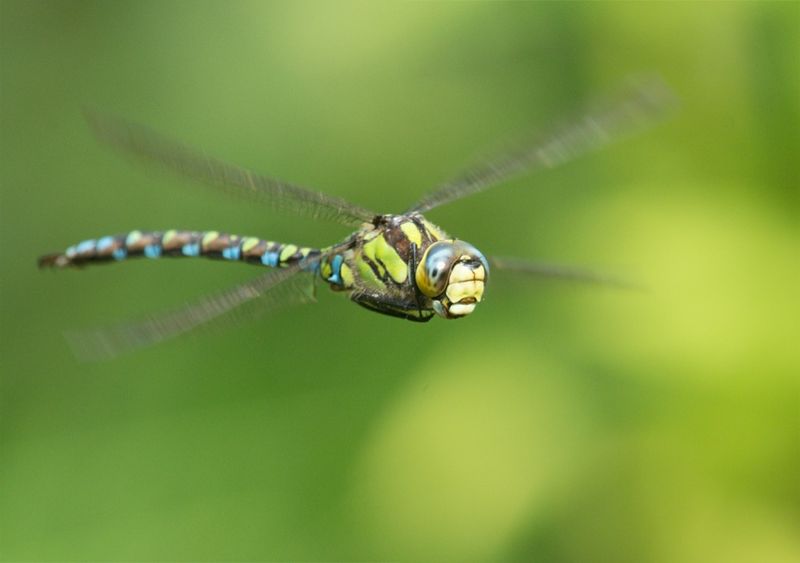
Buzzing through the air at 35 mph, these prehistoric-looking insects have remained virtually unchanged for 300 million years. Their four wings can operate independently, allowing them to hover, fly backward, and make instant direction changes.
Dragonflies catch 95% of the prey they target – the highest success rate of any predator. Their compound eyes contain up to 30,000 lenses, giving them nearly 360-degree vision perfect for high-speed hunting.


